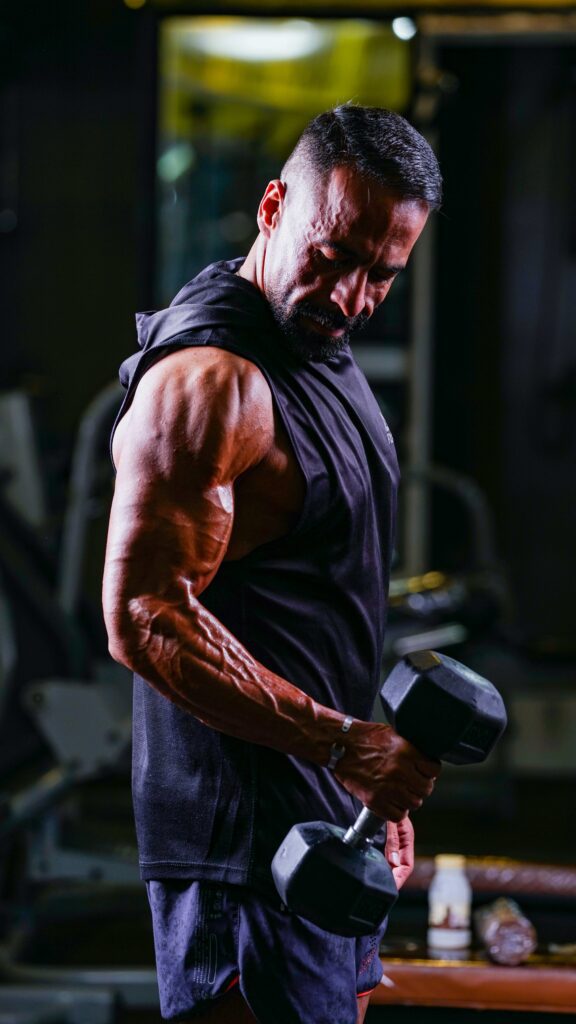Like millions of other fans glued to their tv screens during the Australian Open, you might have found yourself wondering just how the worlds best tennis players reach optimal performance levels – and whether or not those same fitness tenets can benefit you. The simple answer is yes. While it may be too late to kickstart a pro tennis career, a workout routine similar to those undertaken by the stars of the ATP tour can lead to exceptional gains.
Tennis players are known for their endless endurance and stamina, but the pros also undergo extensive strength training to ensure that their bodies are up to snuff. Tennis is one of the most physically challenging sports, requiring full body strength and high levels of mobility. Meaning it takes more than a solid runner or weightlifter to compete with the best.
Tennis puts a premium on a number of fitness attributes. Including quickness, flexibility and fluid movement. Injury prevention is also a massive factor in tennis. The ATP schedule is a year-long challenge, requiring players to perform at high levels for extended periods with minimal time for rest or injury recovery. The multi-surface nature of tennis courts provide another test, as players must prepare differently for clay, grass and hardcourt surfaces. You’ll be hard pressed to find a player on the main tour that hasn’t spent year’s of dedicated training to get where they are.
With an emphasis on endurance, full-body strength and explosiveness, these are ten exercises used by the pro’s that can power up your tennis game and chisel out a grand slam of a body.
Box Jump
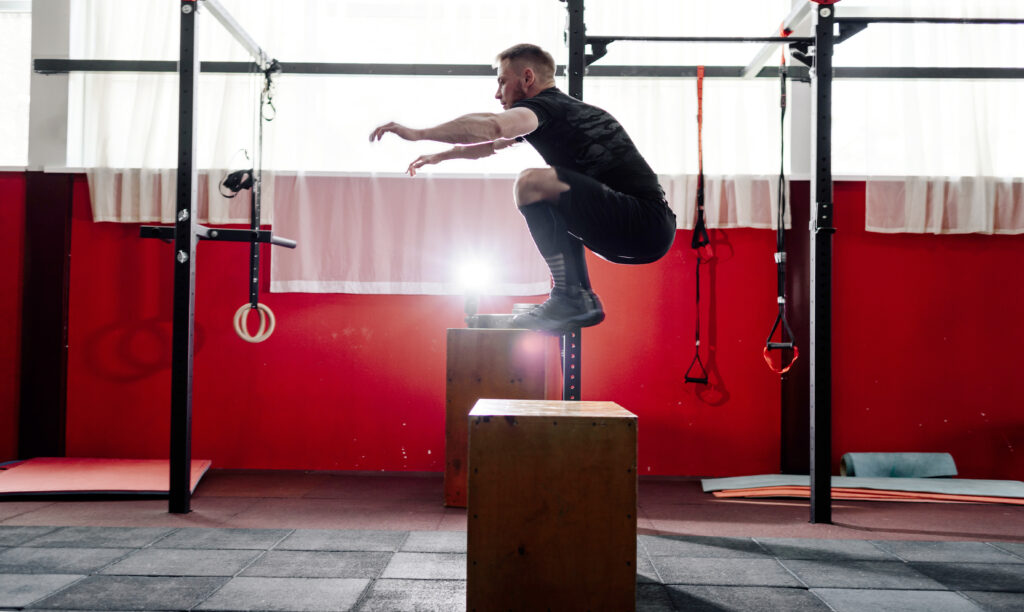
Why: Explosiveness is a key feature of most tennis players skillsets. Sudden bursts of acceleration, last-ditch dives and desperate jumps are all necessary actions in a tennis match. Box jumps, while low impact and relatively easy to perform, are a great way to improve explosiveness and prepare your body for the shock absorbance needed for a range of stop-start movements.
How: Stand with the box in front of you and keep feet shoulder-width apart to start. Bend your knees into a quarter squat position. Use your momentum, swing your arms forward and jump to the top of the box. Land softly and slightly bend your knees. Hop back down and repeat.
Medicine Ball Side Lunge
Why: Core strength in tennis is critical. A strong core and solid set of abs can increase balance and provide a stable base for powering up high-energy shots. Side lunges with a medicine ball will build the necessary core strength and give you a wicked set of abs along the way.
How: Hold the medicine ball at arm’s length with your feet shoulder width apart and stand up straight. Slowly take a controlled lunge to the side, extend your knee and drive your weight to the same side. Keep your arms extended with the medicine ball level with your chest. Return to starting position and repeat.
Goblet Squat
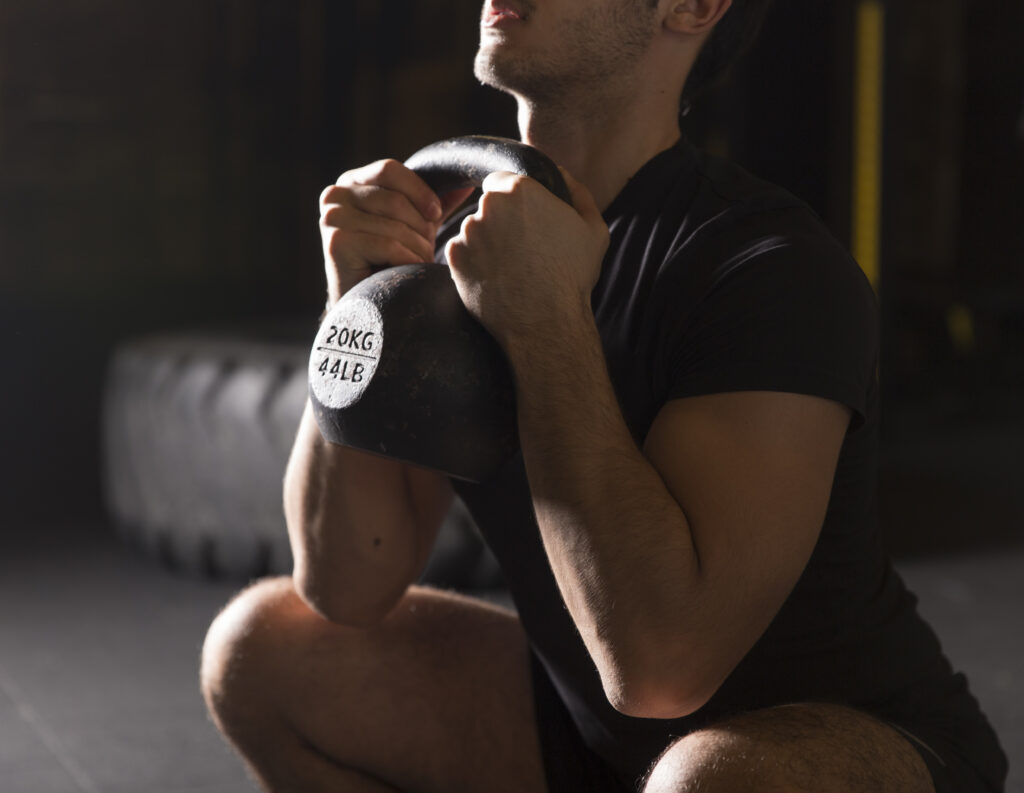
Why: As already stated, tennis is a full-body sport and necessitates strength from head to toe. But lower-body strength could be the most important of all. Squats are great, but the goblet squat is the perfect variation for tennis players as it works out even more muscles than a regular squat. While a normal squat will activate your glutes and quads, goblet squats will additionally improve core and arm strength, making it essential for tennis players.
How: Stand with your feet slightly wider than shoulder-width apart, angle your toes slightly outward. Grip a kettlebell with both hands at chest level and bend your elbows so the kettlebell remains in the centre of your chest. Engage your core and perform a squat, keep your back straight and the kettlebell in the same position throughout the movement.
Lateral Dumbbell Raises
Why: Regularly exercising your rotator cuff and strengthening your deltoid muscles is crucial to preventing shoulder injuries. Making exercises like lat raises especially important for tennis players, who put their shoulders through hell with near-constant movements that push their muscles to the limit throughout matches.
How: Stand with your feet shoulder-width apart with two dumbbells by your side. Lift the dumbbells up and to your side without swinging and with a slight bend at your elbows. Lift until the dumbbells are at chest height before lowering.
Dumbbell Shrugs
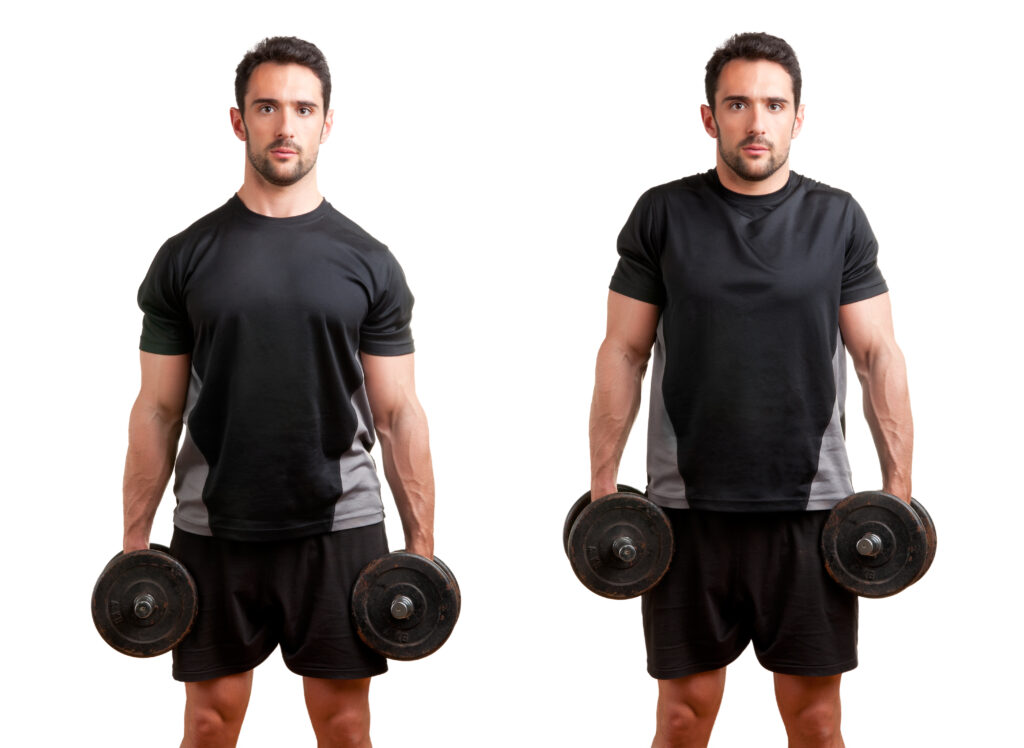
Why: Shoulder shrugs target the trapezius muscles (or traps), which rest on the side of your neck. Traps are instrumental in shoulder blade movement and serve as the pivot point between your upper back, shoulders and neck. Strengthening your traps can add another layer to your tennis skills.
How: Hold the dumbbells to your side with your hands inwards. Lift your shoulders as high as possible by simply engaging your traps. Lower the dumbbells and repeat.
Bent Over Row
Why: Bent over row’s strengthen the back, shoulders and elbow flexors. To avoid the ailment so common in tennis that the sport lends it’s name to it (tennis elbow), prioritise bent over rows. Tennis elbow actually originates in the shoulders, but untrained elbow flexors worsen the condition. And in tennis, you’re going to need those elbows.
How: Hold a barbell with an overhand grip. Keep your hands slightly wider than shoulder width apart. Bend your legs and keep your back straight while shifting your upper body until it’s almost perpendicular to the floor. In this position, move the weight upwards into your upper stomach and lower chest.
Lateral Lunge
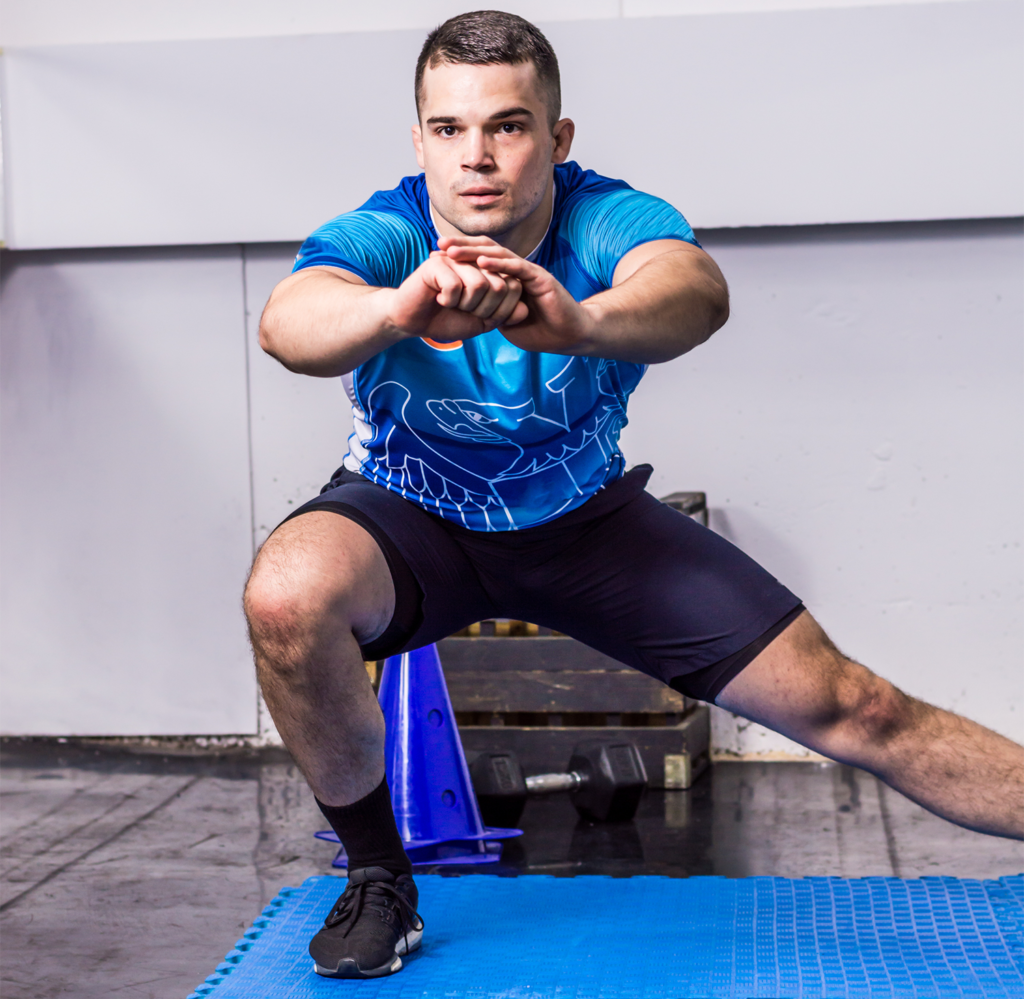
Why: Tennis players regularly make all kinds of lateral movements that leave fans in awe. Just think of Novak Djokovic’s countless splits and desperate stretches that have helped the Serbian become one of the best to ever do it. Lateral lunges will strengthen hip abductors and knee extensors, making the unbelievable movements you see on tv feel like a breeze.
How: Similar to the side lunge with a medicine ball. Step to the side and lower your hips by squatting with your other leg. Keep your back and other leg straight. Return to the starting position by pushing up with your outstretched leg and repeat.
Medicine Ball Parallel Throw
Why: Another great exercise to practice explosiveness is throwing a medicine ball parallel to your body. This will vastly increase your ability to unleash energy at the right moment. It also helps that the motion is similar to swinging a tennis racket, helping you swing faster and harder.
How: Stand facing a wall 1 metre away from you. Hold the medicine ball at waist level. Rotate sideways and away from the wall, before thrusting toward the wall with your hip and throwing the ball. Catch the medicine ball and repeat before switching sides.
Cable Chest Press
Why: A strong tennis swing begins in the chest. Building a stronger chest will improve the power and accuracy of your forehand and backhand, with cable chest press ideal for tennis players. Cable chest press incorporates a similar range of motion and movement of a tennis swing, meaning you’ll not only get chest gains, you’ll also be practicing your swing.
How: On a cable machine, set the cables at just below chest height. Hold each handle and lean forward so the cables tense. Squeeze your chest and drive the handles to the front of your body until your arms are fully outstretched. Release the tension and repeat.
Lying Leg Curls
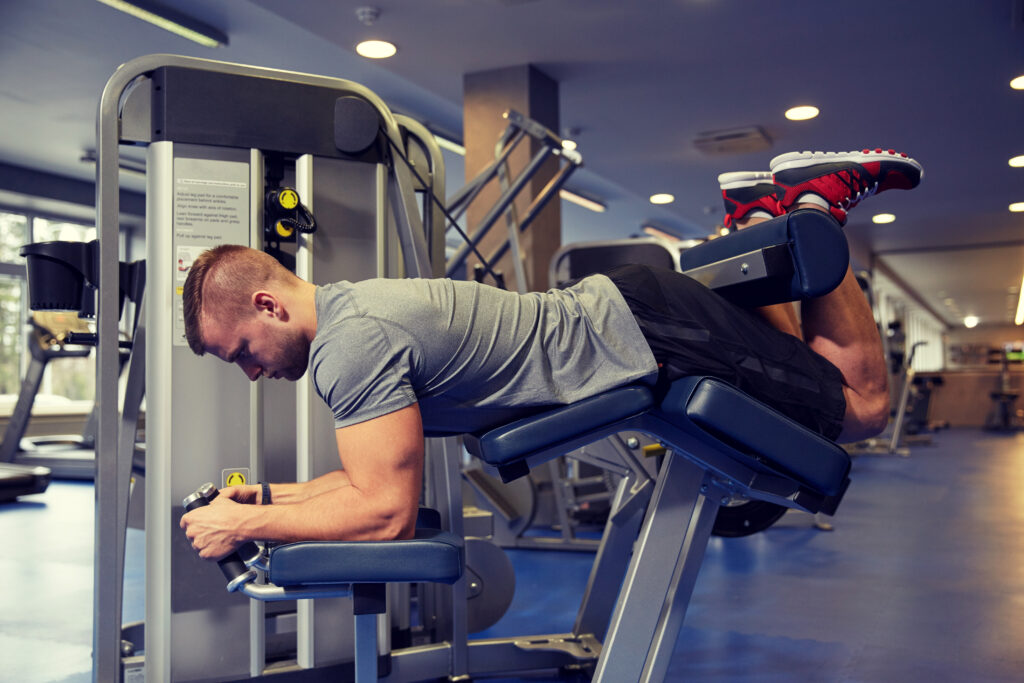
Why: Lying leg curls are an all-over leg burner. This exercise targets your glutes, quads and hamstrings and not only builds lower-body strength, but also improves the all-around explosiveness and mobility that tennis players need.
How: While face down on the lying leg curls machine, stretch your legs out completely and pull the your ankles forward as far as possible. Keep your hips grounded and control the movement for the entire rep.













